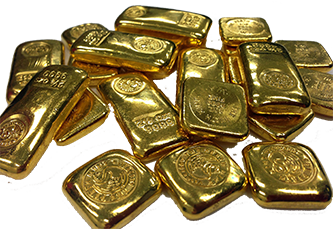

As the United States economy continues to grapple with mounting debts and fiscal uncertainty, it is crucial for individuals to understand the economic trends that may impact their financial well-being. Over the past three decades, I’ve scrutinized the fluctuations of markets with a sharp eye, mainly focusing on precious metals as indicators of economic health and as a means of wealth preservation. Given recent developments, I am compelled to reiterate my stance on the importance of converting depreciating paper assets into more resilient commodities like gold and silver and to discuss preparation for the potential collapse of the debt markets.
The US debt market has swollen to staggering proportions, with the government seemingly locked in a cycle where debt service requires increasingly unsustainable borrowing. We can gauge the market’s temperature by observing the current ten-year bond yield — sitting at 4.185%. It’s feverishly high, signaling investor concern over the nation’s capacity to handle its debt in the long term. Historically, as bond yields rise, so does the cost of borrowing, which can stifle economic growth and lead to broader financial woes. This precarious scenario should not be taken lightly, the debt market is a boiling like a volcano readying to errupt.
Gold and silver — often called ‘monetary metals’ — have historically served as hedges against inflation and currency devaluation. Current market data reveals a promising but cautionary tale: with gold at $2378.59 per ounce and silver at $27.7126 per ounce, my longstanding recommendation to acquire these assets becomes even more pressing. The gold-to-silver ratio (G/S) stands at 85.83, indicating that silver, while still undervalued relative to gold, is accessible and an excellent asset for wealth preservation, especially considering its industrial utility and monetary value.
Examining broader commodities, palladium, and platinum are priced at $883.15 and $950.64 per ounce, respectively. These prices, coupled with copper’s value at $4.077, provide insights into global industrial demand and economic health, reinforcing the notion that tangible assets offer security during uncertainty. Additionally, essentials like Crude Oil, indicated at $75.6 a barrel, alongside Mont Belvieu LDH Propane at $0.57, reveal energy markets’ critical role in determining overall economic stability.
The rise in the velocity money ratio from 1.128 in 2020 and now approaching 1.4 indicates that money is circulating through the economy faster. This can sometimes be a sign of growing economic activity, but, more worryingly, it may also presage inflation. Prices typically rise when money circulates more rapidly without a commensurate increase in goods and services. Keep your eye on money velocity as inflation continues to rise. Sharp increases in money velocity will signal a coming hyper-inflation.
The increasing popularity of cryptocurrencies such as Bitcoin, which stands at $66450.31, reflects a diversifying landscape of assets. Digital currencies offer an alternative to traditional monetary systems plagued by inflationary pressures and governmental control. While volatile, these digital assets embody the growing sentiment for financial systems that operate beyond the reach of conventional monetary policy.
Adding to the complexity, a distinct political milieu pervades economic developments. Political decisions and maneuvers invariably affect financial markets, often leading to market distortions that can result in inefficiency and a distorted perception of economic realities. This manipulation can exacerbate the vulnerability of an already fragile economic system. Perpetual war may distract from catastrophic financial planning but for those with clear heads it signals the end of the current money paradigm is near.
As a survivalist at heart, consider that the sustainability of our current economic practices is highly unlikely. The mounting debt, the Federal Reserve’s monetary policies, and the inflexibility of the current system all point to a need for self-reliance and preparation. Physical gold and silver and pre-1964 coins (often referred to as junk coins) are prudent means to preserve wealth amidst a potential dollar purchase power collapse.
The path forward should involve a meticulous strategy aimed at divesting from highly leveraged financial vehicles and embracing assets that can withstand economic upheaval. Considering the likelihood of a liquidity crisis when the US Debt markets falter, pursuing solid assets is more than an investment strategy; it’s imperative for fiscal survival.
To prepare adequately, one must acquire precious metals, foster a broad understanding of economic indicators, and remain vigilant of political trends that shape the financial landscape. Uncertain times demand decisive action — converting perishable paper into persistent metals, diversifying portfolios to include a variety of assets, and advocating for a more resilient financial system that reflects actual value rather than one inflated by debt and speculation.
In an era marked by volatility and upheaval, it is crucial to understand the mechanisms at play within the economy. As I monitor and analyze market trends, I will provide insights and guidance through my articles, helping you navigate these tumultuous waters. Your fortitude and foresight in securing assets like gold and silver may be your strongest bulwark against the tides of future economic challenges.
Be not deceived – be prepared ~ Silver Savior
WhySilverNOW.com (why is silver the most undervalued financial asset in the world)
Get Your Free Gold Wealth Kit Here
- Note: We are not giving advice; we only give our opinion; we are not financial advisors. This article only represents our thoughts about the economy.




